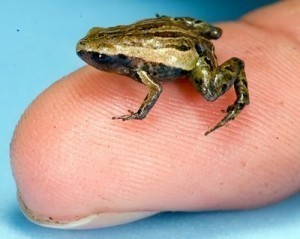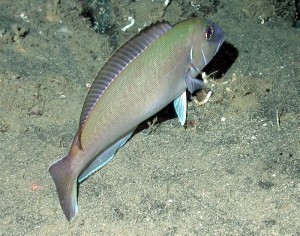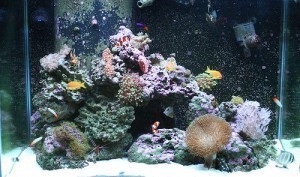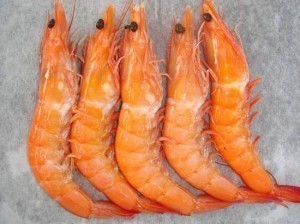How Small is the Smallest Frog?
Classified as amphibians, frogs belong to the order Anura,  which means without a tail. Aside from the absence of tails, they also have other interesting common features such as protruding eyes, webbed digits as well as short bodies. Furthermore, they also have long and powerful hind legs, which allow them to enhance their jumping performance. In addition to these uniquely interesting features and characteristics, they usually live in lakes, ponds and puddles. Aside from these things, it is also quite interesting to find out the actual size of the smallest frog.
which means without a tail. Aside from the absence of tails, they also have other interesting common features such as protruding eyes, webbed digits as well as short bodies. Furthermore, they also have long and powerful hind legs, which allow them to enhance their jumping performance. In addition to these uniquely interesting features and characteristics, they usually live in lakes, ponds and puddles. Aside from these things, it is also quite interesting to find out the actual size of the smallest frog.
The Size of the Smallest Frog
How small is the smallest frog? The smallest frog in the world today is the Brachycephalus didactylus or the Brazilian Gold Frog. It is usually found in the Southern Hemisphere, which is also called Izecksohn’s Toad. Before, it was referred to as Psyllophryne didactyla. In terms of length, an adult Brazilian Gold Frog grows up at an average of 9.8 millimeters only. They got their name from the golden color of their bodies.
In the Northern Hemisphere, the smallest frog is the Eleutherodactylus iberia or the Monte Iberia Eleuth. It grows only between 9.6 millimeters and 9.8 millimeters. This particular type of frog only exists in some regions in Cuba. This animal got its name from Mount Iberia, from where it was initially discovered sometime in 1996. Some adults only measured 8.5 millimeters.
Additional Facts and Other Highly Important Details
While working at the Institute of Forest Research within the City of Havana in Cuba, a scientist named Alberto R. Estrada was the first ever to document this diminutive species. For that particular discovery, he worked together with Pennsylvania State University’s Blair Hedges, in conjunction with the Biotic Surveys and Inventories Program of the National Science Foundation.
The original intent of their expedition was to find an ivory-billed woodpecker. Instead of finding one, they discovered four Iberia specimens, which were taken from the roots of ferns. They published their discovery in the quarterly herpetological and ichthyological journal entitled “Copeia.” The term Eleutherodactylus iberia was first used here.
Although it is quite similar to that of E. orientalis and E. limbatus especially in terms of physical features, E. iberia has a darker color, plus the lines at the back do not reach the rear part of the frog. After the Brazilian Gold Frog and the Monte Iberia Eleuth, the next smallest frog species are the Gardiner’s Seychelles, Yellow-Striped Pygmy Eleuth and Stumpffia tridactyla.





